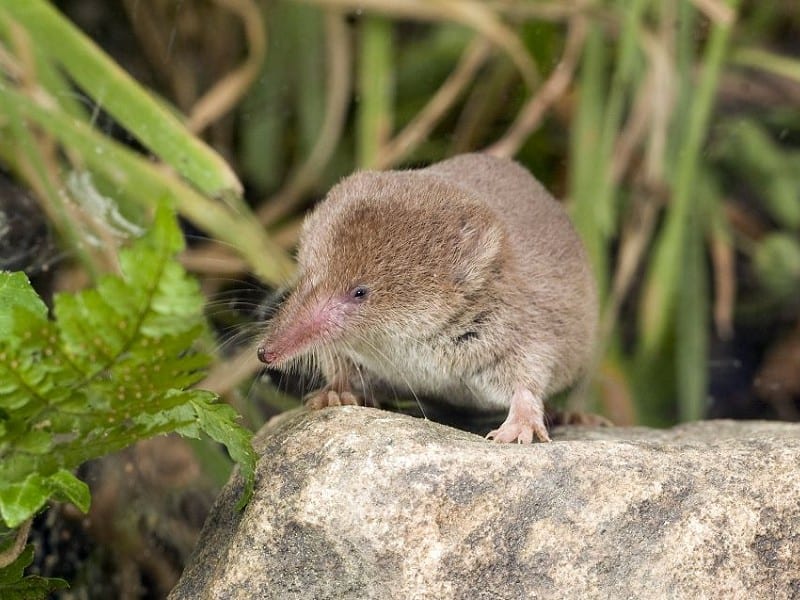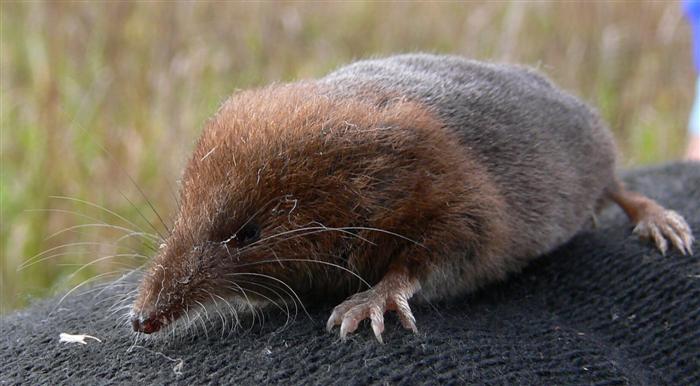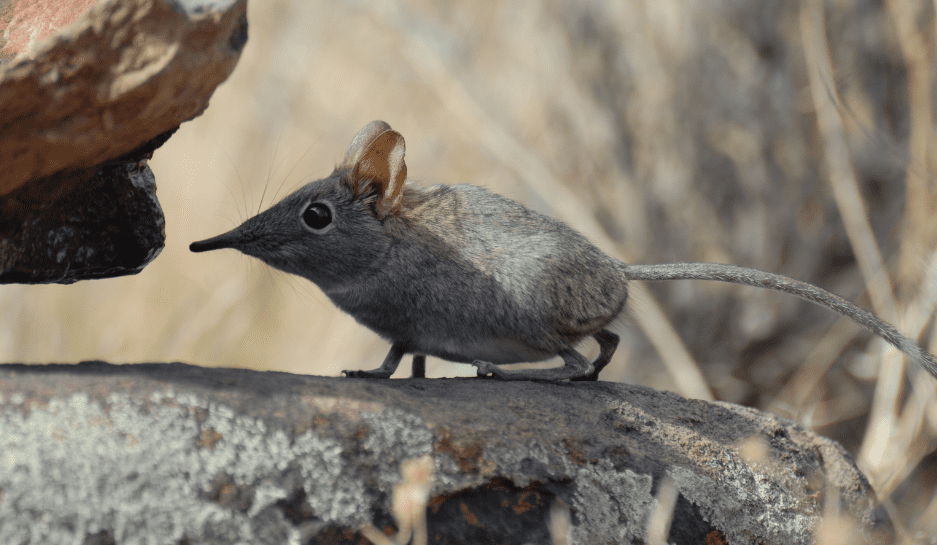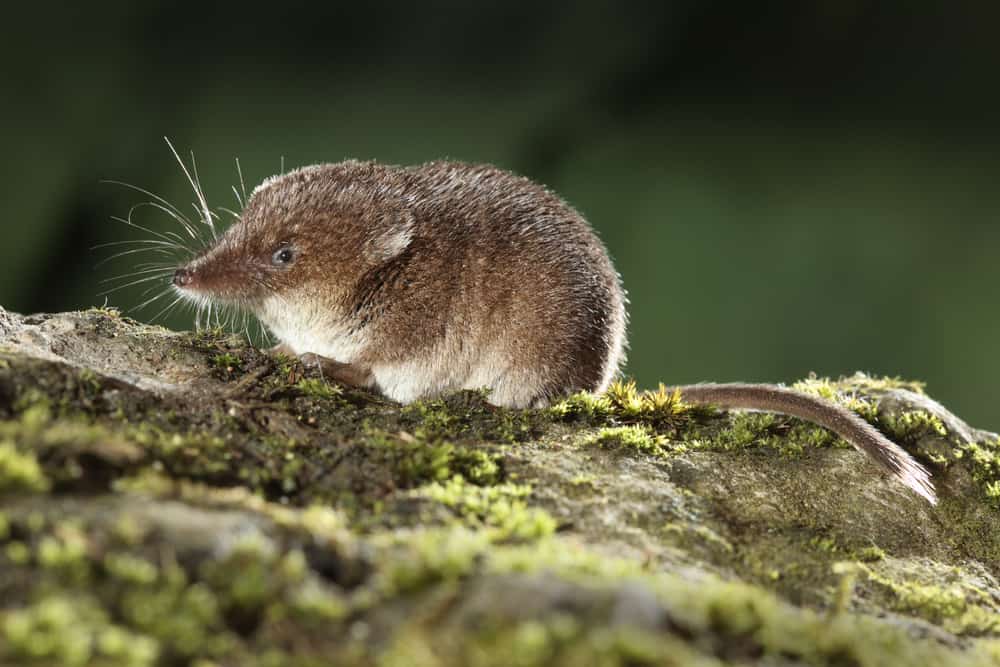Have you ever been walking through a woodland area and seen a small grey mammal scurrying through some leaves? The chances are what you saw was a shrew. These mole-like animals can be found on five continents across the globe and are actually the second most numerous mammal in the United Kingdom.
While they generally live in woodland areas and grasslands, they may from time to time pop up in your back garden which may have piqued your interest in these nippy little mammals. In this article, we are going to be looking at what their diet looks like, in addition to taking a deeper look at what makes them unique.
What are Shrews?
Before we look at their eating habits, it’s important to recognize what makes a Shrew a Shrew. These small mammals are typically only between 48-80mm in length and 5-14g in weight, meaning they can be difficult to spot at the best of times.
Add in the fact that they are incredibly nippy mammals that are constantly on the go and your chances of actually spotting a shrew are fairly slim despite how many of them there currently are in the UK.
There are 385 different species of the shrew but on the face of it, they all look almost identical. Features that give shrews away include a pointy snout, a tiny, slender body and greyish fur. Oh, and the fact that they can make up to 12 body movements per second. In other words, if you see a pointy-nosed, grey animal the size of a mouse darting around your garden then it is a shrew.
Given their manic personalities, it is estimated that their hearts beat at an incredible 800-1000 times per minute. For context, when an average human being does vigorous exercise they should expect their heartbeat to be around 150 beats per minute.
Due to the fact that they essentially live life in a fast forward, their metabolism is incredibly unbelievably high. In fact, if a shrew goes more than three hours without food then it will more than likely die. With that pressure on them, it is hardly surprising that an average shrew will only live for 12 months.
What do Shrews eat?

Just like mentioned above, shrews are always hunting for food because their lives literally depend on it. With this constant ticking time bomb on their heads, they go out looking for the following food sources:
As you can see, shrews are insectivores, meaning the majority of their diet consists of various bugs and insects. This is hardly surprising given that they spend a lot of their time underground. Even when they come up, these are the types of animals that you’d expect to see in the areas where shrews operate.
Although these bugs and insects are the most common source of food for shrews, there are some species that have a carnivorous appetite too. The types of animals that they tend to hunt and baby mice and rats, more often than not if these rodents venture into their habitats.
In addition to rodents, shrews have been known to tackle snakes and, wait for it, other shrews! Yes, that’s right they occasionally eat their own. Essentially, with their speed, any small animal that finds itself on a surface level in a woodland/grassland area is fair game to a shrew.
You may be wondering how such a small animal can eat other mammals of a similar size. Luckily for shrews, they have very sharp teeth, meaning they can get stuck into chunkier mammals than you’d expect on the face of it.
Surprisingly, shrews show little interest in plants and vegetables which is quite surprising given that they reside in areas full of greenery. As we’ve already mentioned, though, they are constant hunters due to the demands of their body so if they are struggling to find insects and/or small mammals then they will eat roots and seeds to survive.
The one time of year where shrews will get a marginal break from hunting is in the winter when they actually shrink in size to adapt to a new lifestyle. With the shrinking in size, they move less which in turn means they aren’t on a never-ending hunt for food to balance out their metabolism.
What are the predators of Shrews?
When it comes to predators, shrews are highly sought after due to the sheer volume of them. Sure, they aren’t easy to catch due to their speed and they will put up a fight with their sharp fangs but there are plenty of animals out there that are up to the task.
Their most common predators are:
The most common predators on this list are the tawny and barn owls, perhaps unsurprising considering these owls get a birds-eye view of shrews and can therefore track their fast movements better than animals on ground level.
When they are hunted by predators, the last thing they do before they die is release a foul-tasting liquid from their glands. While this doesn’t save their lives, it may well help fellow shrews survive in the future as it can put off the same predator from going after any more shrews.
Failing that, then at least it gives their killer an unpleasant experience and I guess that makes it all even, right?! Sadly for the shrew population, Owls don’t possess a sense of smell meaning that this odor release does very little to deter their main predator.
Can you keep a Shrew as a pet?

If you notice that shrews are popping up more frequently in your garden or surrounding areas then you may be tempted to try and adopt a couple of them as pets. If they’re living on your land then you may as well take them in and make them part of the family right? Wrong.
To put it bluntly, shrews just aren’t meant to be domesticated animals, despite how cute they look when you see them close up. They are wild animals with incredibly sharp teeth and some species are poisonous. It’s a recipe for a pet disaster, especially if you have small children or other pets.
Taking away the logistical nightmare that it would be, keeping a shrew in a contained cage or containment area would just be cruel. They need to move relentlessly and they enjoy hunting. Taking that side away from them wouldn’t be right and would ultimately see them live even less than the 12 months that they do in the wild.
If you want to give shrews a hand in their hunt for food then, though, then leave out some seeds and any unused green vegetables that you have in the house. If nothing else, you may get to spot some of them and their impressive speed.
How do you get rid of a Shrew?

On the flip side, you may be wondering how to get rid of shrews if you notice that more and more are congregating on your land. Generally speaking shrews like greeny areas and are attracted to dark, wet spaces. With that in mind, please take the following measures to prevent shrews from your garden:
- Rake up leave and clear all other debris from your garden.
- Mow your lawn regularly.
- Cut down and/or trim bushes and hedges.
- Exterminate insects from your garden.
- Make sure your food recycling bin is collected and emptied on schedule.
- If you have pets, then don’t feed them outdoors.
- Stop feeding birds.
Shrews have also been known to venture into people’s homes if they can smell food nearby. This is understandably going to be more of a concern as the last thing anyone wants is wild animals running riot in your kitchen.
Given how fast they are, it is unlikely that you are going to catch them with your bare hands so unless you have a cat (if you do then they will likely sort the situation out for you!), you should consider buying a humane trap.
Insert bait, such as insects, into the trap and wait for the shrew to make its way to your trap. Once you’ve caught it, do the decent thing and take it back to a woodland area local to you and let them carry on with their daily hunt.
Conclusion
To conclude, shrews are tiny, insectivorous mammals that resemble small mice. They move at lightning speeds and use their needle-like teeth to pierce through their prey. They work extremely hard every single day, reflected by their monstrous heart rate, and need to eat every 2-3 hours in order to survive.
We hope that you are now more informed on what a shrew’s diet looks like and also have a deeper understanding of these fascinating little beasts. Next time you’re on a walk through a woodland area, keep an eye out but be warned; blink and you’ll miss them.
